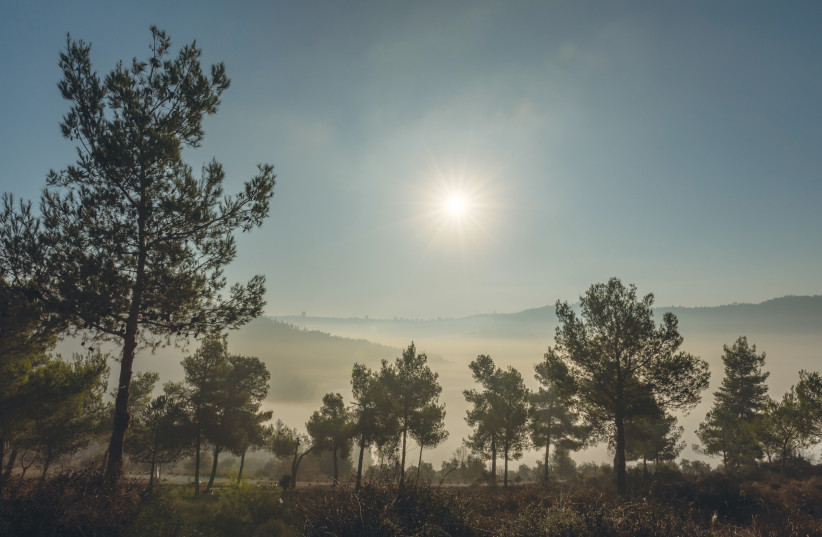It’s not certain whether Israeli schools and kindergartens will open on September 1, but whenever they do, administrators should heed scientists, who have proven that selective planting of plants and shrubs between roads and playgrounds can substantially cut toxic traffic-derived air pollution reaching school children.
The new findings, published this week under the title “Protecting playgrounds: Local-scale reduction of airborne particulate matter concentrations through particulate deposition on roadside ‘tredges’” in the journal Scientific Reports, show that roadside vegetation can be designed, installed and maintained to achieve speedy, significant and cost-effective improvement of air quality. Tredges are trees managed as a high hedge.
“Our findings show that we can protect school playgrounds, with carefully chosen and managed tredges, which capture air pollution particulates on their leaves.”
Prof. Barbara Maher
Air pollution risks for children
Exposure to traffic-related air pollution has been linked with a range of health risks including cardiovascular, respiratory and neurological. These risks are likely to get worse in young children attending primary schools next to busy roads, as their lungs and other organs are still developing – and children have a higher breathing rate than adults.
Exposure to fine particulate matter in air pollution is the main environmental risk factor contributing to cardiovascular deaths and disease globally, and is linked to around six to nine million premature deaths each year.
<br>Can 'tredges' protect children?
A team of researchers led by emerita Prof. Barbara Maher installed tredges at three Manchester primary schools during the summer school holidays of 2019. One school had an ivy screen installed, another had western red cedar and the third school had a mixture of western red cedar, Swedish birch and an inner juniper hedge. A fourth school, with no planting, was used as a control.

The school with the ivy screen saw a substantial reduction in playground particulate matter concentrations but an increase in black carbon. The playground with the mixture of planting saw lower reductions in air pollution to that of the western red cedar.
<br>Best plants against pollution
The biggest overall reductions in particulate matter and black carbon were shown at the school with western red cedar planted. The results showed that 49% of black carbon and around 46% and 26% of the fine particulates emitted by passing traffic were captured by the western red cedar tredges. They also significantly reduced the magnitude and frequency of acute “spikes” in air pollution reaching the playgrounds.
“Our findings show that we can protect school playgrounds, with carefully chosen and managed tredges, which capture air pollution particulates on their leaves,” said Maher. “This helps to prevent at least some of the health hazards imposed on young children at schools next to busy roads where the localized air quality is damagingly poor, and it can be done quickly and cost-effectively.”
The scientists believe that western red cedar performed best at preventing particulate air pollution from reaching the playground because its prolific, small, rough, evergreen leaves act like a filter, capturing particulate pollution and stopping it from circulating in the atmosphere. When it rains, the particulates wash off – ending up in the soil or drains – enabling the leaves to then capture more particulate pollution.
“Western red cedar tredges work well because this species’ leaves form millions of tiny rough corrugated projections, each of which can bump into the particulates suspended in the air and ‘capture’ them in their ridges, furrows and pores,” she continued. “This takes them out of the local atmosphere and therefore reduces the exposure to these traffic-sourced air pollution particulates of the children and staff in the playground.”
The researchers believe species like ivy were not as effective at capturing particulate pollution as the cedar because of the smooth, waxy surface of its leaves; ivy acts more like a fence that blocks the transport of some particulate matter, but it is not as effective at capturing and thus removing it from the air, they wrote.
The researchers suggest that these benefits highlighted by the study are not limited to schools but that carefully selected and managed tredges could be used in other parts of urban areas to reduce the damaging health impacts of exposure to traffic pollution.
